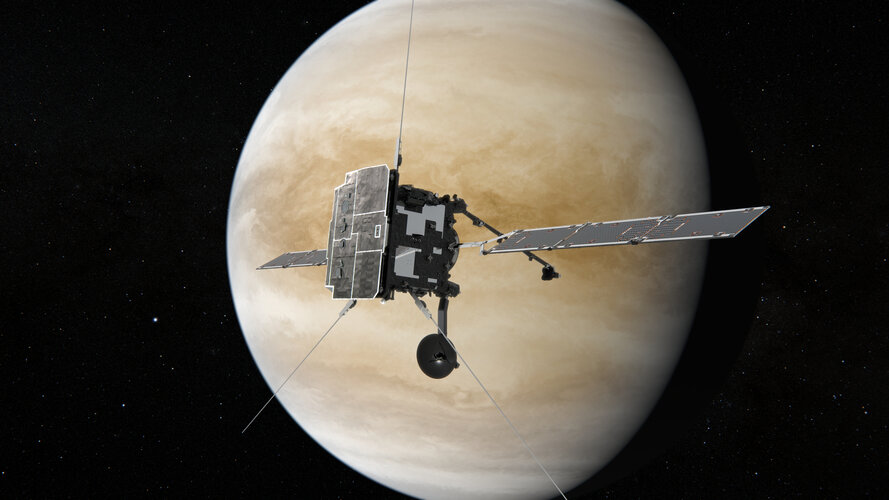“We expect Solar Orbiter to heat up significantly during the flyby. To prepare for this, the team carried out a detailed simulation of the heating effect of the Venus gravity assist manoeuvre. Several parts of the spacecraft will experience a significant temperature increase, but all components will stay well within their design limits.”
“For a few of us in the control team, it is our first flyby. During the planning, we learned a lot about what it takes to navigate the Solar System, and we are very excited for tonight.”
Cloudy with a chance for science
During the manoeuvre, Solar Orbiter will continue to point its ‘front’ – its instruments and, more importantly, its heat shield – towards the Sun to keep the spacecraft safe. That means it won’t be able to point any of its cameras towards Venus and its cloud tops during the flyby, but it is still an opportunity to gather some scientific data.
Unlike Earth, Venus lacks a global magnetic field to interact with the charged particles of the solar wind. However, a layer of its atmosphere known as the ionosphere interacts with the solar wind in unique ways.
Solar Orbiter’s Magnetometer and Radio and Plasma Waves sensors will be switched on as the spacecraft passes Venus to record the planet’s magnetic and plasma environment. The data they collect will contribute to ongoing research on how the solar wind affects planetary atmospheres beyond Earth.



